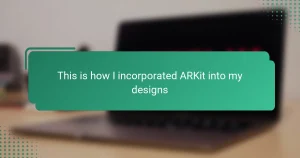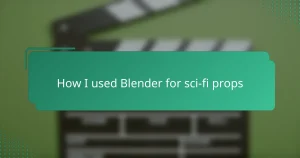Key takeaways
- Mastering basic controls in 3D Studio Max is essential for unleashing creativity in modeling.
- Creating sci-fi props requires a balance of imaginative design and practical principles to achieve authenticity.
- Utilizing tools like Editable Poly, spline modeling, and the Mirror tool enhances efficiency and precision in prop creation.
- A systematic approach, including initial sketches and modular modeling, leads to organized and effective design outcomes.
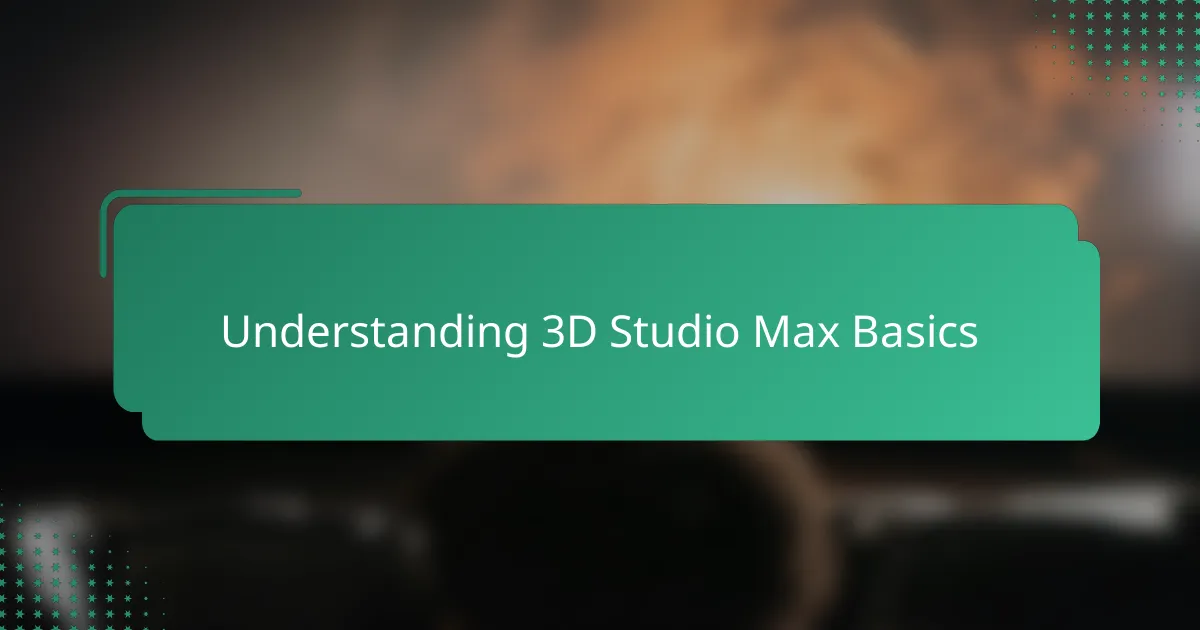
Understanding 3D Studio Max Basics
When I first opened 3D Studio Max, the interface felt like a cockpit full of unfamiliar buttons. But diving into the basics—like navigating the viewport and understanding the timeline—was crucial. Don’t you find it amazing how mastering just these simple controls can open up endless creative possibilities?
Learning about primitive shapes was my first lightbulb moment. I began by molding basic cubes and spheres, gradually realizing these were the building blocks for complex sci-fi props. It’s interesting how something so simple lays the foundation for entire futuristic worlds.
One thing I’ve noticed is that patience is key when grasping 3D Studio Max basics. It’s tempting to rush, but taking the time to explore meshes and modifiers really pays off. Have you ever felt that thrill when a rough model suddenly clicks and starts to look like what you imagined? That’s where the real magic begins.

Introduction to Science Fiction Props
Science fiction props have always fascinated me because they transform ordinary objects into gateways to other worlds. They’re not just tools or gadgets—they carry stories, hint at advanced technology, and spark the imagination. Have you ever paused to wonder how these intricate designs manage to look both believable and otherworldly at the same time?
In my experience, creating sci-fi props means balancing creativity with some grounded design principles. Each curve, texture, or glowing element plays a role in making the prop feel authentic within its futuristic context. It reminds me of how every detail matters, much like the layers of a character in a novel.
What excites me most about sci-fi props is their endless variety—from sleek spacecraft controls to rugged alien weaponry. They challenge you to think beyond current technology and envision what might be possible. Isn’t that sense of endless potential what makes designing these props so rewarding?
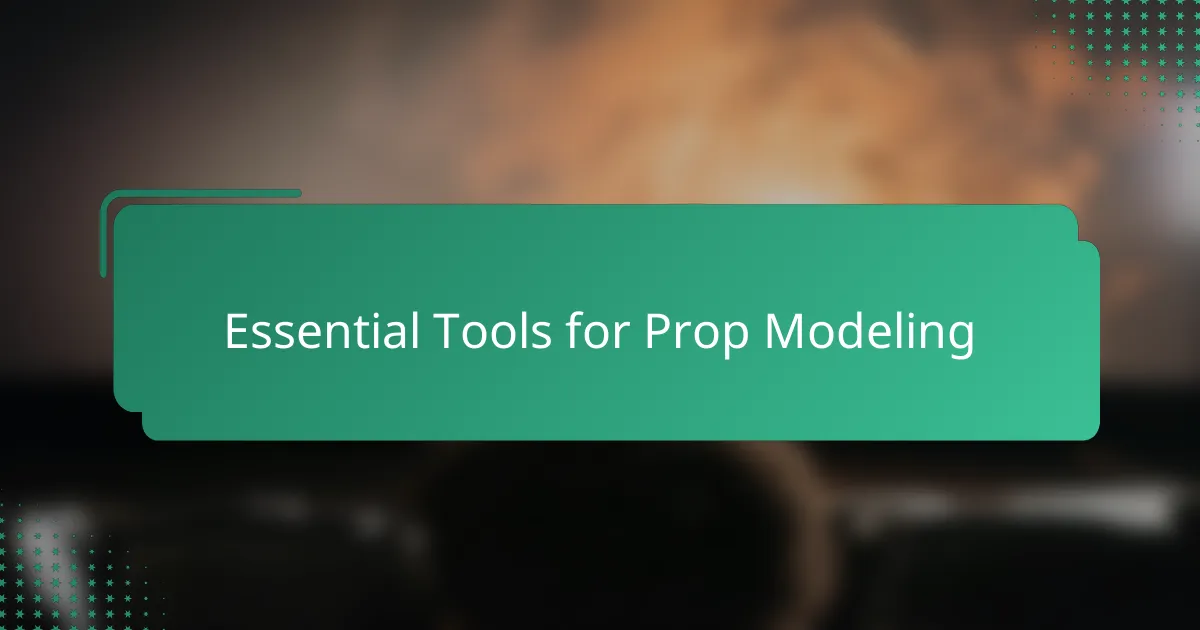
Essential Tools for Prop Modeling
When I first started modeling sci-fi props in 3D Studio Max, the array of essential tools felt overwhelming. But soon, I realized tools like Editable Poly and the Modifier Stack became my best friends—they let me shape and refine complex surfaces with precision. Have you ever experienced the satisfaction of tweaking a vertex just right and seeing your prop take on a new level of detail?
Another tool that changed the game for me was the use of spline modeling. By creating and shaping splines, I could lay down futuristic curves and mechanical parts much faster. This approach helped me capture that sci-fi aesthetic without losing precious time, proving that knowing when to use each tool can really boost creativity.
I also can’t stress enough how helpful the Mirror tool was, especially for symmetrical props like helmets or weapons. It saved me countless hours by duplicating one side perfectly, allowing me to focus on the design rather than repetitive work. Isn’t it great when a tool does the heavy lifting so you can concentrate on the fun part—the creative expression?
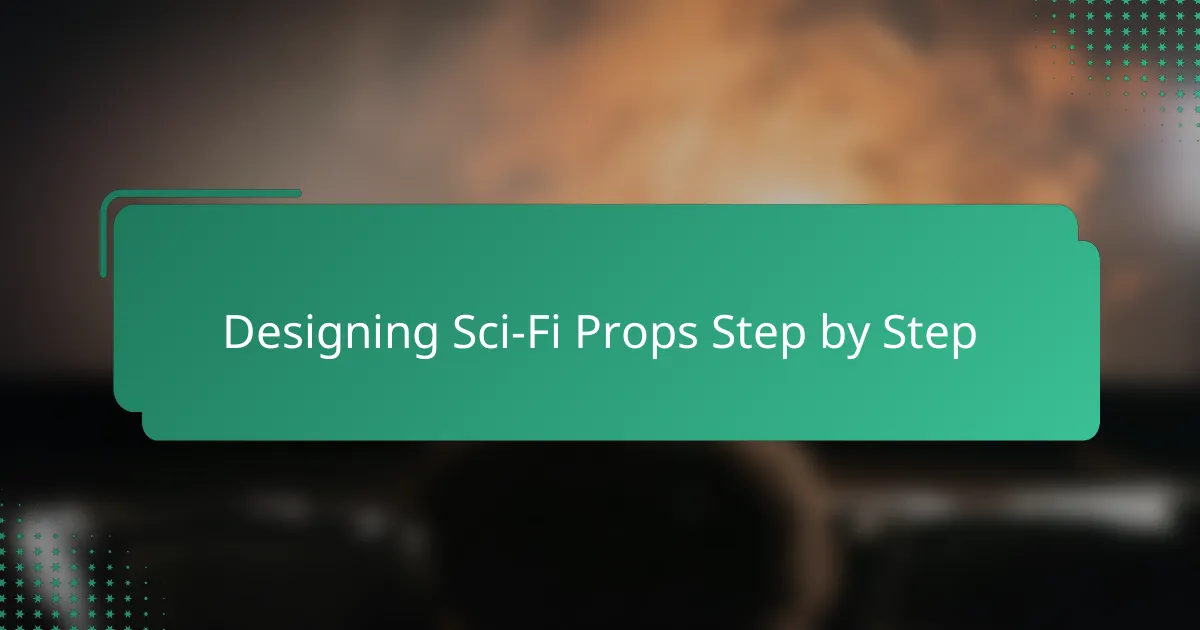
Designing Sci-Fi Props Step by Step
Starting with a clear concept helped me immensely when designing sci-fi props step by step. I usually sketch out my ideas first, even roughly, which gives me a roadmap inside 3D Studio Max. Have you ever noticed how a simple sketch can make modeling feel less like guesswork and more like bringing a vision to life?
Once I have the concept, I break down the prop into smaller parts and begin modeling them individually. This modular approach keeps me organized and lets me focus on perfecting each element before assembling the whole. It’s a bit like crafting a puzzle where every piece has to fit just right to create that believable futuristic look.
After modeling, I dive into detailing with modifiers and textures—adding those little sci-fi touches like glowing panels or mechanical grooves. I find this stage incredibly rewarding because it’s where the prop really starts to tell its story. Don’t you love that moment when a plain shape transforms into something that feels alive and functional?

Texturing and Detailing Techniques
Texturing in 3D Studio Max felt like giving life to a lifeless model. I remember spending hours experimenting with different materials—metals that looked worn from battles, or slick surfaces reflecting alien light. Have you ever noticed how the right texture can instantly sell the idea that this prop belongs in a sci-fi universe?
When it came to detailing, I found that small imperfections made all the difference. Adding scratches, panel seams, or tiny bolts transformed my models from bland shapes into believable gadgets. It was like tuning an instrument—each detail added depth and character without overwhelming the design.
One technique I often rely on is layering multiple texture maps—diffuse, bump, and specular—to create visual complexity. This approach convinced me that texturing isn’t just about colors; it’s about how light and shadow interact with every surface. Have you tried tweaking these maps to see how dramatically a prop’s personality can change?
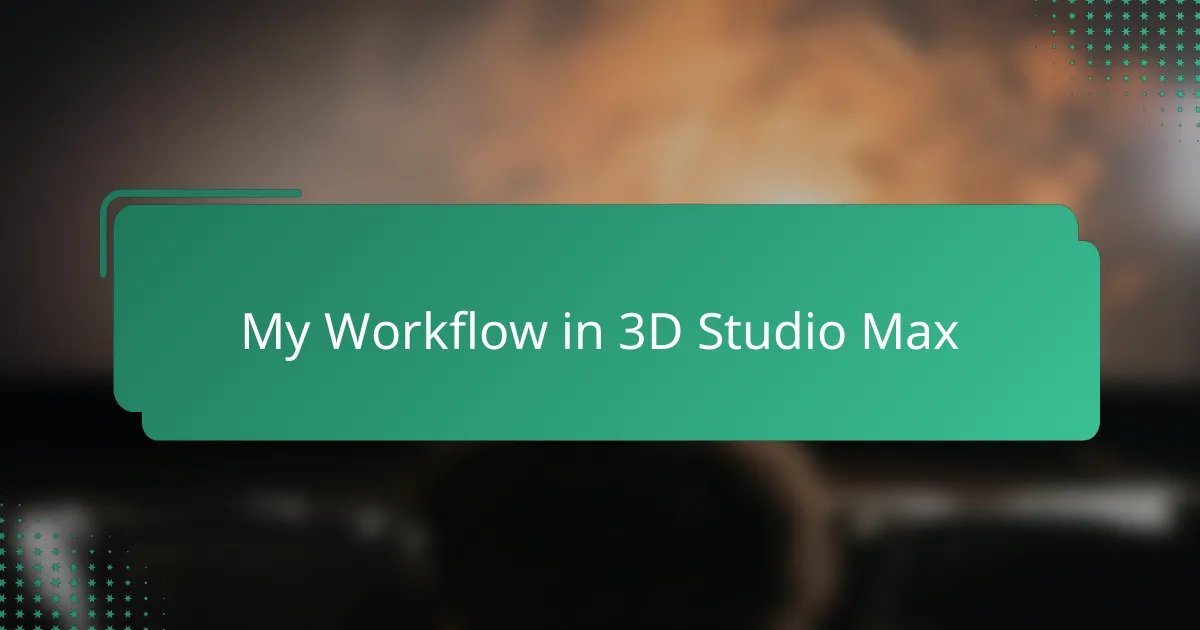
My Workflow in 3D Studio Max
When I settled into my workflow in 3D Studio Max, I quickly learned that organization is everything. I start by blocking out the primary shapes, keeping the mesh clean and manageable. Have you found that laying a strong foundation often makes the rest of the modeling process feel less daunting?
From there, I move into refining each part with the Modifier Stack, experimenting with tools like TurboSmooth to add complexity without losing control. It’s fascinating how subtle tweaks can shift a prop from looking mechanical to genuinely sci-fi. Doesn’t that moment when your model starts to “click” into place feel like discovering a secret code?
Finally, I make sure to frequently switch between different viewport perspectives to catch any inconsistencies early. Over time, this habit has saved me countless hours correcting small mistakes after the fact. Do you ever catch yourself zooming in too close and missing the bigger picture? Balancing detail and overview has been key for me in making my sci-fi props both believable and polished.

